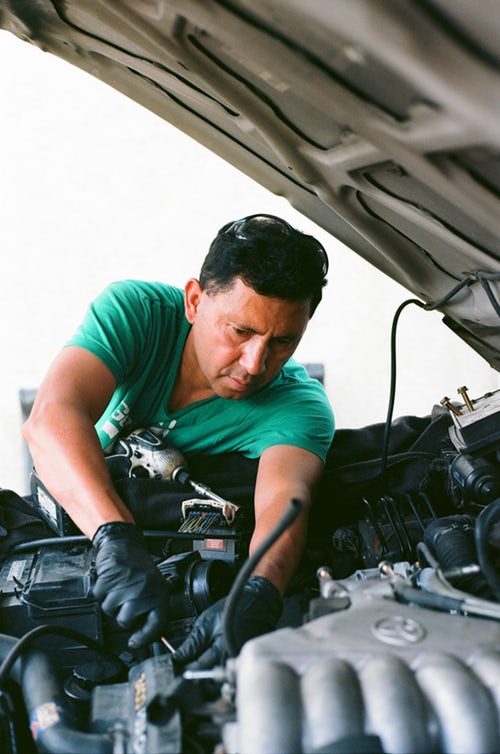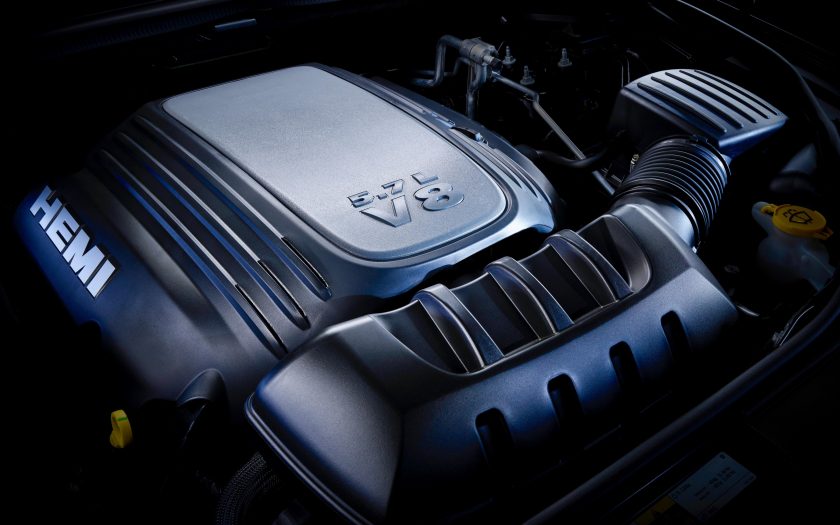Replacement of a timing belt is quite an expensive operation, and many owners put it off for as long as possible. It can be false economy.
Timing belts began to replace chains in the late 70s and early 80s as part of the push to reduce weight and save money.
As engines have become smaller and squeezed into smaller engine bays, engine design has had to become more compact. This usually also means engines need more valves to be able to “breathe” well enough to deliver performance and economy.
An engine burns fuel in an engine cylinder to push the piston down, creating the power to move the car. When the piston reaches the bottom of the cylinder, the rotating crankshaft pushes it back up again, expelling the burnt gases (called the exhaust and compression cycles). Meanwhile, at the top of the engine are valves that need to open and close at precisely the right times to ensure this all works efficiently. Hence the valve timing has to be correlated with the crankshaft. If they get out of synchronization, the rising piston can strike the valves and the engine will self-destruct.
Connecting the crankshaft that controls the pistons and the camshaft that controls the opening and closing of the valves is a belt or chain. Chains are more robust, but they are also heavier, can be noisy and are more expensive to manufacture. They also need to be lubricated by oil. Hence the move to belts. Rubber or neoprene timing belts can be located on the outside of the engine because they don’t need to be lubricated. They are cheaper and quieter but prone to wear and fatigue and so need to be replaced regularly (usually between 60,000 and 100,000km) as a preventative measure.
However, it is still necessary to replace a timing belt after a given period of time, even if the mileage isn’t up to the recommended replacement schedule.
Recently, some manufacturers have gone back to chains because of their proven durability. If you aren’t sure if your car has a timing belt or chain, check the manufacturer’s guide or consult a mechanic.
So what does a timing belt do?
The timing belt keeps the camshaft and crankshaft turning at the correct rate in relation to each other. Depending on the vehicle make, a timing belt will also run the water pump, oil pump and injection pump. The camshaft controls the opening and closing of the valves for intake and exhaust. The valves must open at the correct time to allow fuel to enter the chamber and then close to allow for compression. If the timing cycle is off, fuel may not enter the cylinder or may escape through an open exhaust valve. If the valves are not fully closed during compression, the majority of the engine’s power will be lost.
When should I change my timing belt?
Replacing a timing belt is something of a grudge purchase. Many owners think that their car is running just fine, so perhaps they can put off replacing the timing belt for another 20,000km or until the next service.
The best advice is to follow the manufacturer’s recommendations. At the very least, this will ensure that you don’t void your warranty (and with warranties now covering extended periods, this is more of an issue than it once was). More tellingly, it may save you a potentially very large repair bill or even total engine replacement.
Symptoms of a faulty timing belt may not show up until it’s too late. They include loss of power, increased fuel consumption, misfiring and engine vibration. When chains were being used, as they wore they became loose which generated noise and chatter. Belts, on the other hand, are less likely to make a noise as they become loose or as they crack and break down and what noise they do make is often difficult to discern.
When replacing a timing belt, it makes sense to have other work done at the same time. Removal and replacement of the timing belt is the major cost, not the actual belt itself. Replacing the water pump, for example, requires removal and replacement of the timing belt, so it’s good practice to have it replaced when the timing belt is replaced since the water pump isn’t an expensive fix, and tends to wear out at a similar rate to timing belts.
What happens when a timing belt breaks?
Still not convinced? Well, here’s what happens when a timing belt breaks.
The best you can hope for is that the engine simply stops running because there is no longer any connection between camshaft and crankshaft. This will happen in so-called “free running” engines because they are designed in such a way that the internal bits won’t collide with each other, even if they get out of sync. You may wonder why all engines aren’t designed this way, but “free running” engines demand compromises that affect both performance and efficiency. However, in most engines, when crankshaft and camshaft are not connected, because the valves are open when they should be closed and therefore protruding into the cylinder, pistons come into contact with valves, with disastrous results for both. Valve stems can bend or break, pistons are damaged or even holed and cylinder bores are damaged by debris. Worst case, valves and rods can be forced through the engine block, the crankshaft can be damaged and the engine is destroyed.
Can you check or replace the belt yourself?
Mostly, it is a job for a professional, because access to the timing belt requires removal of many engine components. It’s fiddly, risky and usually beyond the skills of a novice.

8 signs your timing belt needs replacement.
As we said, the best way to avoid an expensive failure is to have the timing belt changed according to the manufacturer’s guidelines. But there are signs that a belt needs replacement, assuming you can see them and replace the belt before it’s too late. If you’ve bought a second hand car and cannot confirm that the belt has been replaced when it should have been, the best advice is to have it changed immediately (some sellers put off replacing a belt because of the expense, then pass on the potential disaster to a new owner… don’t let that be you).
1. Loss of material.
This is belt wear, and your timing belt wears just like your tyres and for the same reason… friction. As it wears, it loses grip and eventually begins to slip. Slippage is more likely to happen at the worst possible time, such as when pulling a trailer or caravan or in wet weather.
2. Abrasion.
Your belt is abraded when a tensioner or pulley is misaligned, or when there’s excessive heat or a bearing failure. The signs include wear on the sides of the belt. If you can see the filaments, act immediately before you cause serious damage to your engine.
3. Cracking.
Inspect both the top and underside (the ribbed cross-section) of the belt. If the belt is made of rubber or neoprene and there are lots of cracks, the belt needs attention as soon as possible.
4. Glazing.
In this case, the belt has a shiny or glossy appearance on the underside. This indicates that the belt has gone stiff and is no longer providing the necessary flexibility. This can be checked by trying to impress an indent into the surface of the belt. If you can’t leave a mark, it’s time for replacement.
5. Pilling.
As the timing belt ages, the material it sheds can build up in the rib cross-sections. This can lead to noise from the belt and excess vibration. It’s worth also checking the accessory brake pulleys for build-up as they may also need to be changed.
6. Hydroplaning.
Just like hydroplaning or aquaplaning on the road, this happens when the water between the belt and pulleys cannot be dispersed. The belt then hydroplanes, or slips, resulting in loss of power to the engine accessories.
7. Elongation.
As the name implies, this is a case of the belt having stretched. When this is beyond the ability of the tensioner to adjust, tension between belt and pulleys is reduced and performance drops off.
8. Misalignment.
This is an indication that the internal components of the tensioner have failed. It results in excessive noise and vibration and also excessive heat.
